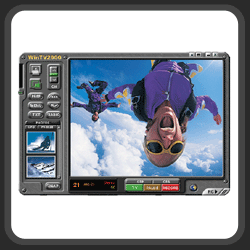| HTPC Primer, Part II
|
In the first of a two-part series of Tech Tips on getting started with a Home Theater PC, or HTPC, we looked at the two most basic features to be considered: audio and video. With those areas addressed, there are still plenty of aspects worth considering that can help your computer become better integrated into your home theater for a truly enjoyable experience. Some of these aspects include component speed, cooling, noise, user interface, and style.
Component Speed:
As with any other computer, the speed of the components can be a concern for an HTPC. It all depends on exactly what functions the user has intended for their particular unit.
If they are only interested in audio/video playback and functions like viewing photos and web browsing, even the most basic of computers may suffice. A system solely for DiVX / DVD video and MP3 audio playback would work fine on just about any system, perhaps even an old 400 MHz system from the late nineties (if you have such a machine around at this point). The only additional items that would be necessary are a compatible AGP/PCI graphics card with TV-out and a sound card. Sure, the performance might not be up to par for today's applications, but it doesn't take much to handle the basics. Multi-tasking on such a system might result in jittery video or lagging audio, so don't ask an HTPC built around past generations of technology to do too much at once.
Upgrading a system from these meager starting points only improves the capabilities of an HTPC, and may not cost all that much either. Considering the minimum required for handling the basics, you may even be able to retire your old desktop PC to the living room and still be satisfied with the performance. Cutting edge is not necessary, at least not always.
If you want to play video games, the requirements change and you will obviously need a processor, memory, and video card that match the minimum requirements published by the game manufacturer. Some of the required hardware, or suggested minimal hardware for reasonable performance, for games today is enough to have the casual game player thinking twice about such an investment.
Playing video games on a big screen is an incredible experience, and takes things to a whole new level when compared to game play on your typical desktop monitor. Being able to see things in a game on a larger scale, and with the detail offered by an HDTV (if available), really makes these capabilities desirable. It's just a matter of deciding how modern of a system is needed, and whether it is an affordable path to take with your HDTV.
 Image from hauppauge.com
Image from hauppauge.com
One other area of HTPC use that may be speed critical is capturing video and TV. Not only do you need a processor capable of handling the conversion of the video signal to digital data, but you also need a hard drive that can keep up as well. Asking a system with a slow hard drive (or processor) to capture any length of video can result in a recording that has an audio/video sync issue or other glitches in the playback.
Modern hard drives with SATA-150 or even ATA-100/133 interfaces should be fast enough, and multiple hard drives may really speed thing up. One method of increasing the performance is to have one hard drive run the operating system and capturing software, while a second hard drive is only used to store the captured files. Another option would be to install your drives in RAID 0, as described in this Tech Tip, which effectively doubles the speed at which your drives can read/write data.
|
|
|
|